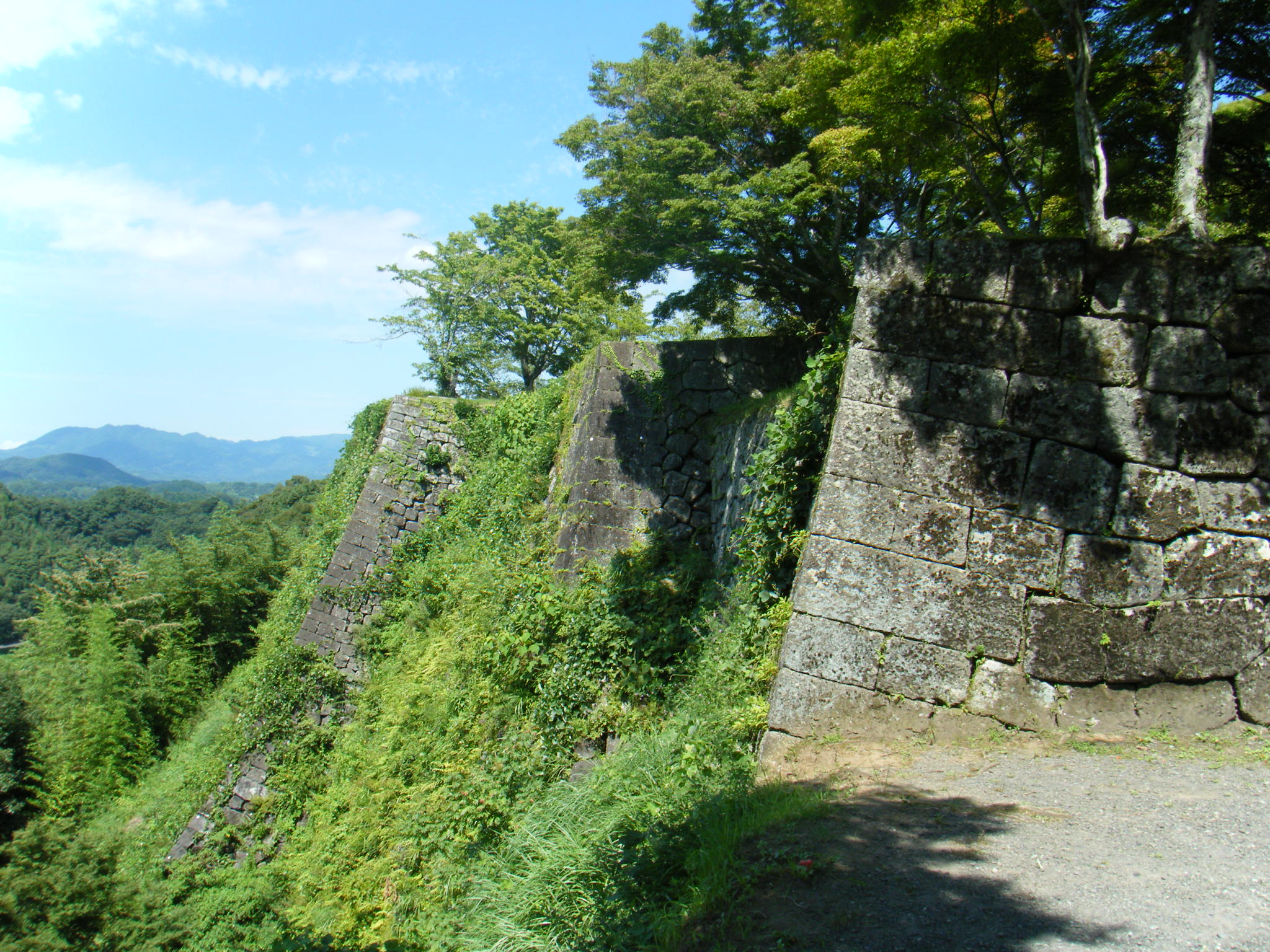Oka Castle on:
[Wikipedia]
[Google]
[Amazon]
 The Oka Castle, now in ruins, is in Taketa,
The Oka Castle, now in ruins, is in Taketa,
 The Oka Castle, now in ruins, is in Taketa,
The Oka Castle, now in ruins, is in Taketa, Ōita Prefecture
is a prefecture of Japan located on the island of Kyūshū. Ōita Prefecture has a population of 1,136,245 (1 June 2019) and has a geographic area of 6,340 km2 (2,448 sq mi). Ōita Prefecture borders Fukuoka Prefecture to the northwest, Kumam ...
, Japan
Japan ( ja, 日本, or , and formally , ''Nihonkoku'') is an island country in East Asia. It is situated in the northwest Pacific Ocean, and is bordered on the west by the Sea of Japan, while extending from the Sea of Okhotsk in the north ...
.
History
Oka Castle has an extensive history. Sited on a mountaintop, it was originally built in 1185, forMinamoto no Yoshitsune
was a military commander of the Minamoto clan of Japan in the late Heian and early Kamakura periods. During the Genpei War, he led a series of battles which toppled the Ise-Heishi branch of the Taira clan, helping his half-brother Yoritomo conso ...
.
Shiga Sadatomo took control in 1332 and made many repairs and improvements. The castle was ruled by Shiga's descendants until 1586.
At that point, it was taken over by Nakagawa Hideshige (in 1594) and more improvements were made, including an expansion. A main keep
A keep (from the Middle English ''kype'') is a type of fortified tower built within castles during the Middle Ages by European nobility. Scholars have debated the scope of the word ''keep'', but usually consider it to refer to large towers in c ...
was added along with a palace
A palace is a grand residence, especially a royal residence, or the home of a head of state or some other high-ranking dignitary, such as a bishop or archbishop. The word is derived from the Latin name palātium, for Palatine Hill in Rome which ...
. The Sankai turret (三階櫓), the castle's de facto Tenshu
is an architectural typology found in Japanese castle complexes. They are easily identifiable as the highest tower within the castle. Common translations of ''tenshu'' include keep, main keep, or ''donjon''.
''Tenshu'' are characterized as ty ...
, collapsed in an earthquake
An earthquake (also known as a quake, tremor or temblor) is the shaking of the surface of the Earth resulting from a sudden release of energy in the Earth's lithosphere that creates seismic waves. Earthquakes can range in intensity, from ...
, in 1769. Many of the buildings were destroyed by fire, in 1771, which had originated in the castle town. The Nakagawa ruled the castle until the Meiji Restoration
The , referred to at the time as the , and also known as the Meiji Renovation, Revolution, Regeneration, Reform, or Renewal, was a political event that restored practical imperial rule to Japan in 1868 under Emperor Meiji. Although there were ...
.
Oka castle was decommissioned in 1871, and in 1874 all the buildings were dismantled.
Current site
The current site features some of the extensive stone walls which run for several kilometres. There is a statue dedicated to composer Rentaro Taki, whose famous song Kōjō no Tsuki was inspired by the castle ruins, on site.Literature
*References
External links
{{100 Fine Castles of Japan Former castles in Japan 1185 establishments in Asia 1871 disestablishments in Japan 12th-century establishments in Japan Castles in Ōita Prefecture